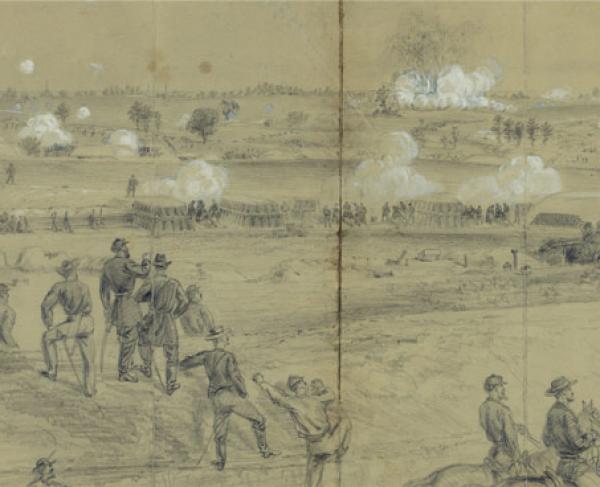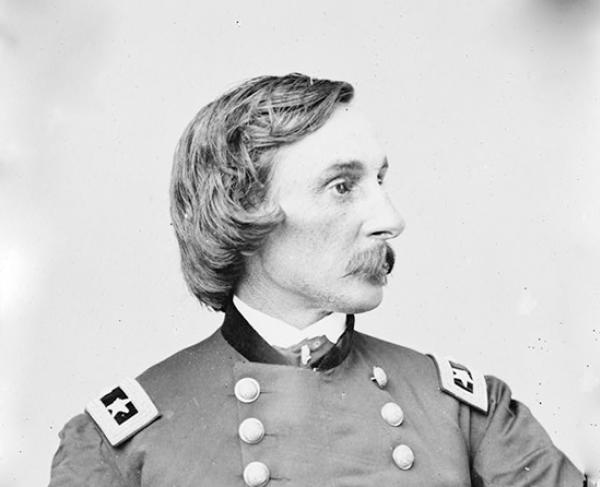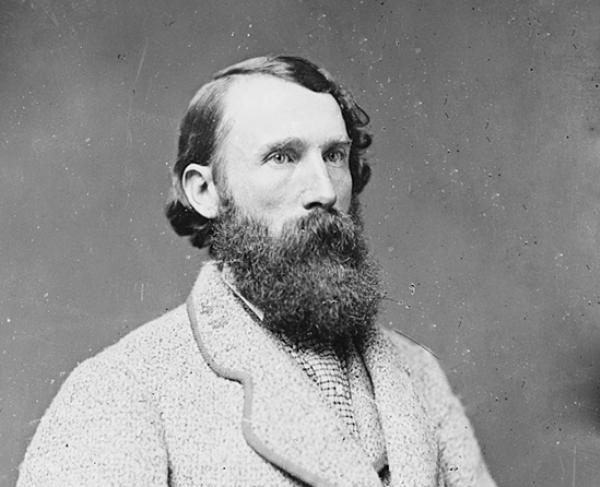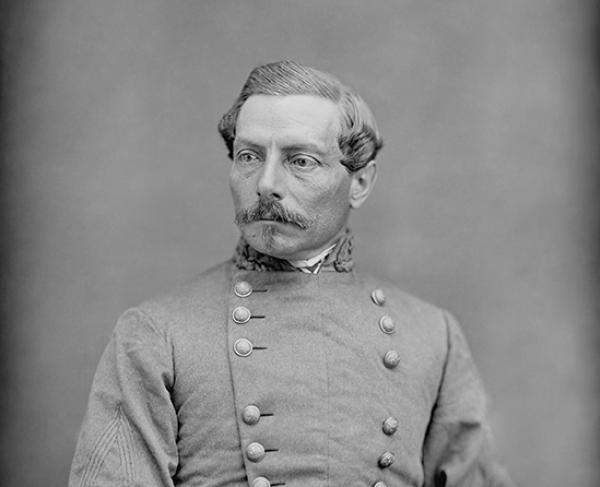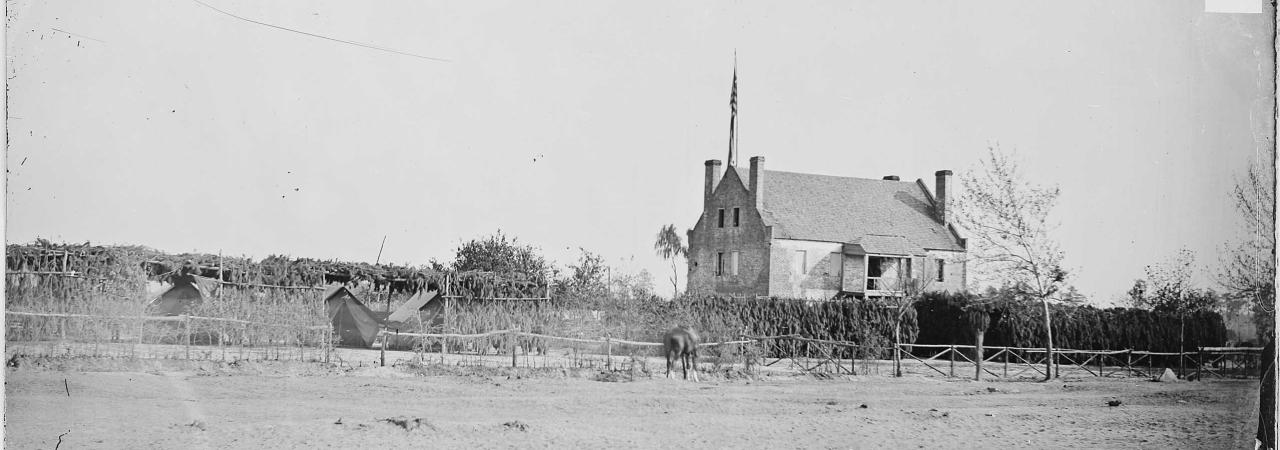
Globe Tavern, near Petersburg, Va., photographed by Matthew Brady.
Globe Tavern
Second Battle of the Weldon Railroad
Petersburg, VA | Aug 18 - 21, 1864
The Weldon Railroad connected Richmond to the South's last Atlantic port in Wilmington, North Carolina. By August 21, 1864, the Union had captured the Weldon railroad.
The stupendous failure on July 30, 1864, of General Grant’s Third Offensive at the Battle of the Crater convinced Ulysses S. Grant that isolating Petersburg remained the only way to win the campaign. His first target remained the Weldon Railroad, which he had failed to capture in June. At 4:00 a.m. on August 18, Grant sent his Fifth Corps under General Gouverneur K. Warren westward with orders to destroy a section of the railroad and hold it if he could.
The first troops to reach the tracks arrived around 9:00 a.m. The Yankees slowly moved northward, leaving heated rails twisted in the shape of the Maltese Cross (the Fifth Corps’ insignia) in their wake. When they reached the point near the intersection of the Halifax and Vaughan roads, they met fire from a small Confederate battery.
In a pouring rain the Federals scattered the Rebel gunners and deployed across the tracks near a small house belonging to the Davis family. Between 2:00 and 3:00 p.m., gunfire erupted in the thick woods all around you as three Confederate brigades led by General Henry Heth pounded southward against Warren’s men. The Southerners drove their enemy south about three-quarters of a mile, while Warren frantically called up reinforcements and artillery support. The engagement then degenerated into a static fire fight, and Heth eventually withdrew to a line parallel to our location.
The first day of the Battle of Weldon Railroad ended with nearly 1,000 Union casualties and about 350 for Heth. The Federals still held the tracks, but the stage was now set for a more powerful Confederate attack the next day.
Warren’s Fifth Corps reached the Weldon Railroad on August 18, 1864, and withstood a counterattack about three-quarters of a mile north of here that afternoon. The next day, however, Confederate General William Mahone sliced between Warren’s right flank and the Ninth Corps’ left, inflicting an embarrassing tactical defeat on the Yankees, including the loss of more than 2,500 prisoners. The timely arrival of reinforcements, however, kept the Northerners across the critical rails.Two days later, Mahone struck again, this time aiming for Warren’s left flank, beyond the alignment of the modern railroad to the west. Mahone acted, however, on inaccurate information. Instead of striking the flank and rear of the Union position, his assault hit the Federals head-on, with predictable results. A South Carolina brigade under General Johnson Hagood suffered the most. Some 60 percent of his men fell under a withering fire.
The three days of fighting along the Weldon Railroad (there was no serious combat on rainy August 20) cost the Union army 4,296 casualties. The Confederates lost between 1,600 and 2,300 men. The Union victory denied General Robert E. Lee direct access to supplies coming from the south and compelled him to patch together a makeshift line of communication running across country from Stony Creek Depot, a dozen miles south of us, through Dinwiddie Court House, and up the Boydton Plank Road. The Federals consolidated their gains by extending their fortifications westward, anchoring their new works with this powerful fort, named after General James S. Wadsworth, a Fifth Corps division commander mortally wounded at the Battle of the Wilderness.
Globe Tavern: Featured Resources
All battles of the Richmond-Petersburg Campaign
Related Battles
20,000
14,000
4,296
1,600

